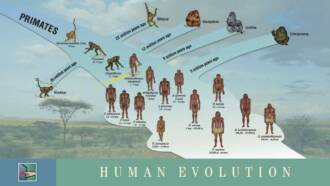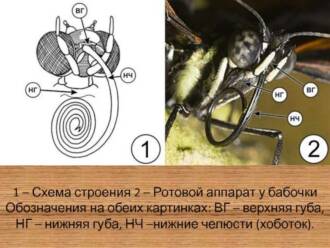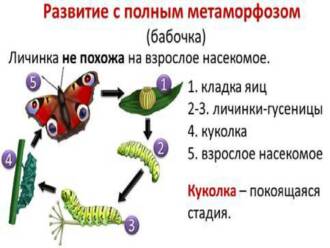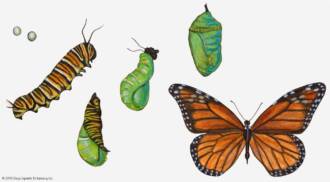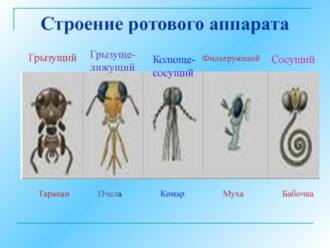
Butterflies are among the most colorful and beautiful insects on the planet. Their evolution has a long and interesting history that goes back millions of years. Butterflies have come a long way to evolve into the magnificent creatures we know them today.
The history of butterfly evolution began with the appearance of the first insects on Earth. They appeared about 350 million years ago and have gone through many changes and transformations since then. In the process of evolution, butterflies acquired their own characteristic features, such as wings with bright colors and a special structure.
One of the most fascinating moments in the evolution of butterflies is their transformation. It occurs through several stages: from egg to caterpillar, then puppet, and finally to adult butterfly. Each stage has its own characteristics and is an important stage in the development of the insect.
The transformation of a butterfly is an amazing example of adaptation and evolution in the animal kingdom. From a small egg, through a hungry caterpillar, to a beautiful butterfly, these insects overcome many obstacles and change externally and internally to survive and reproduce.
Over the course of evolution, butterflies have developed complex mechanisms for protecting and attracting mates. They may imitate other insects or imitate dangerous animals to ward off predators. Butterflies can also use their bright colors and scents to attract mates and provide offspring.
The evolution of butterflies continues to this day. They continue to adapt to their changing environment and find new ways to survive. Each butterfly species has its own characteristics and unique adaptations that help them survive and thrive in their habitats.
Occurrence and diversity of butterflies

Butterflies are some of the most amazing creatures on the planet. They are the result of millions of years of evolution, which has led to the formation of more than 150 thousand different species of these insects. During the process of evolution, butterflies have undergone significant changes, adapting to different environmental conditions.
One of the main features of butterflies is their transformation during their life cycle. They go through several stages of development, starting as an egg, then a larva, a pupa and finally developing into winged insects. This amazing transformation process, called metamorphosis, allows butterflies to adapt to and survive in different environmental conditions.
Most butterfly species have wings that allow them to fly. Butterfly wings come in a variety of shapes, colors and patterns, making them truly magnificent and attractive creatures. They use their wings to move, find food, migrate, and attract mates.
Butterflies play an important role in the ecosystem as they are plant pollinators. They feed on the nectar of flowers and fly to different plants, transferring pollen from one flower to another. Thus, they contribute to plant reproduction and biodiversity conservation.
The role of butterflies in the ecosystem
Butterflies are important participants in the ecosystem, playing a direct role in the process of plant pollination. The evolution of butterflies has led to the development of specialized organs, such as a long stigma, which allows them to reach nectar inside flowers. This makes butterflies essential pollinators for many plant species.
Butterflies also function as a food chain, serving as prey for many birds, insectivores and other predators. Their bright coloring serves as a warning that they are poisonous or a nuisance, which deters potential predators.
Butterflies play an important role in biodiversity as they are one of the most abundant groups of insects. They occupy different ecological niches and help maintain balance in the ecosystem. Thanks to their presence, cross-pollination between different plant species is possible, which helps maintain genetic diversity and adapt to changing conditions.
Research into the evolution of butterflies allows us to better understand their contribution to the ecosystem and conservation. They are one of the interesting objects for study, since their diversity and adaptation to various environmental conditions provide unique opportunities for scientific research and application of acquired knowledge in practical activities.
Butterfly life cycle: from egg to adult insect

Butterflies are amazing insects that have gone through a multi-million-year evolutionary path. Their life cycle consists of several stages, starting from an egg and ending with an adult insect. Each stage is important and interesting, and each of them has its own characteristics.
Egg
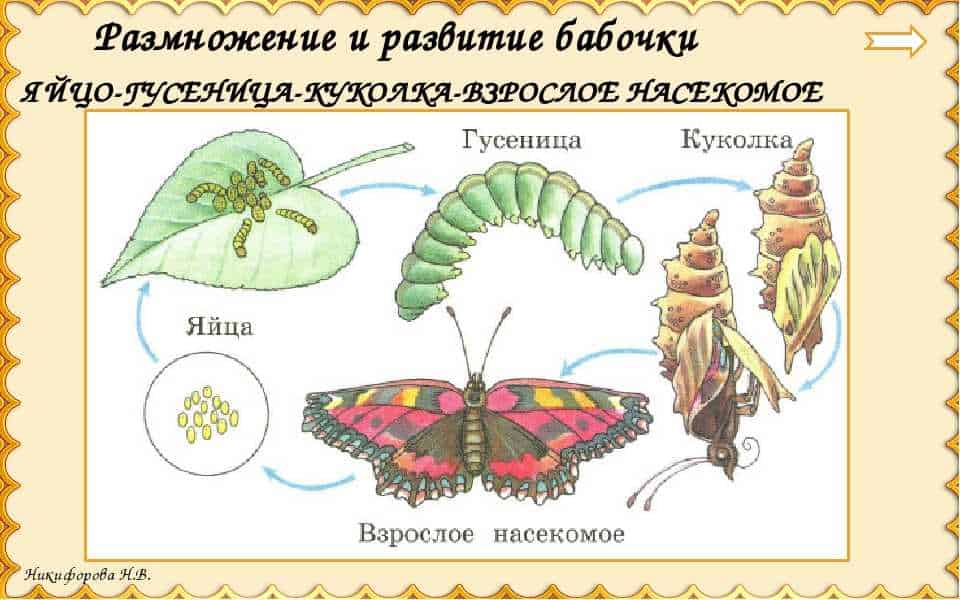
The first stage of the butterfly life cycle is the egg. Butterflies lay their eggs on various plants, which are food for the future caterpillars. The eggs are usually small and round, and can come in a variety of colors and shapes. They can be laid singly or in groups on the leaves or stems of plants.
Caterpillar
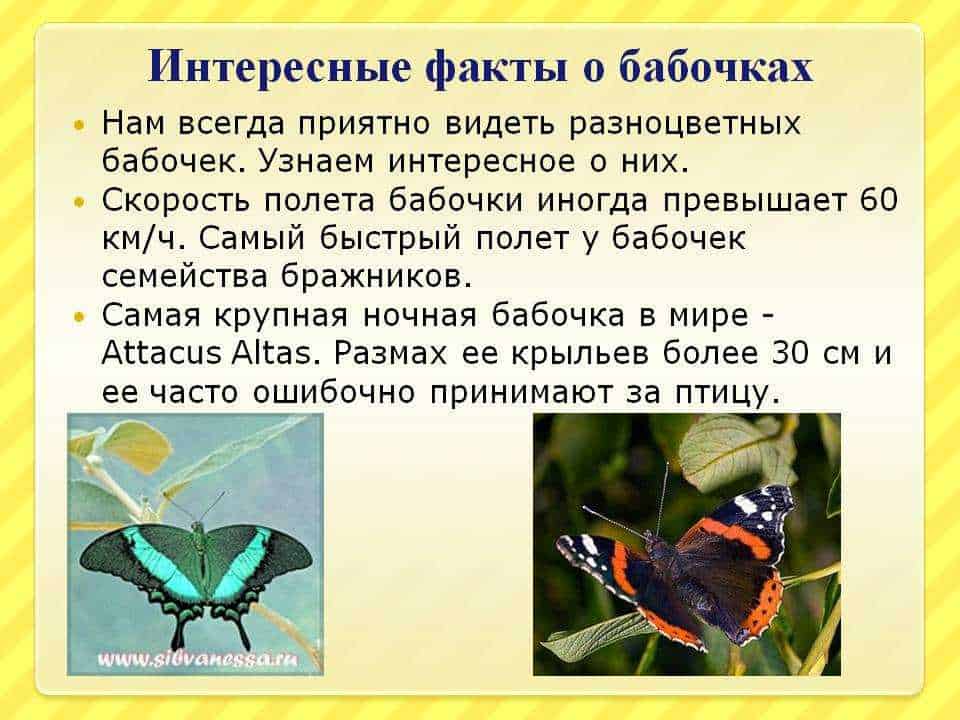
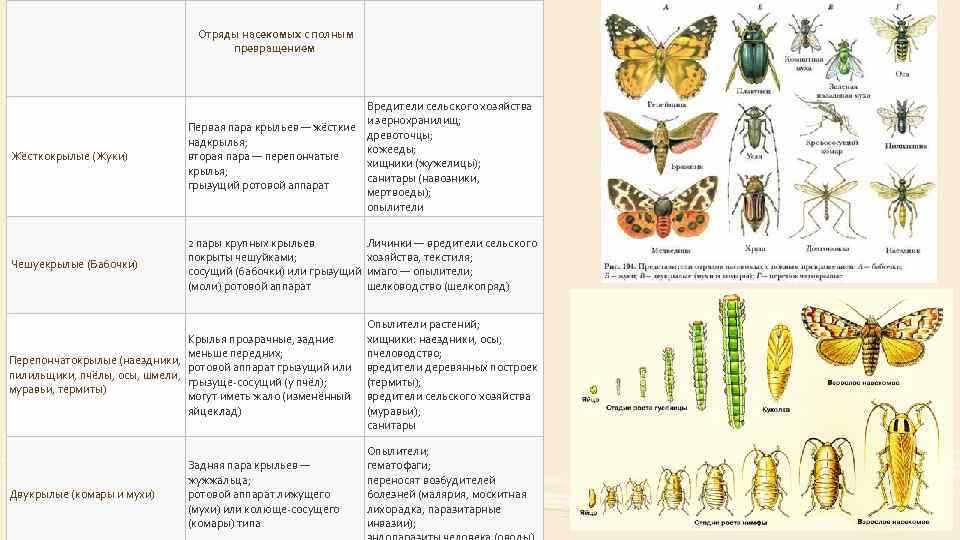
The egg hatches into a caterpillar, the second stage of the butterfly's life cycle. Caterpillars come in a variety of sizes and colors. They actively feed on plant matter to gain enough nutrients to grow and develop. Caterpillars may go through several lines as they grow and shed their skin.
chrysalis

When the caterpillar reaches its full size, it moves on to the next stage, the pupa. The pupa is a special stage in which the caterpillar undergoes metamorphosis and turns into an adult butterfly. During this stage, the pupa is protected by a hard case and remains dormant while internal changes occur.
adult butterfly

Finally, the last stage of the butterfly life cycle is the adult form. When the internal changes in the chrysalis are complete, it breaks open and the adult butterfly flies out. Adult butterflies usually have colorful wings and a folded structure. They can fly, feed on flower nectar, and reproduce, continuing the butterfly life cycle.
Metamorphosis of butterflies: amazing transformations
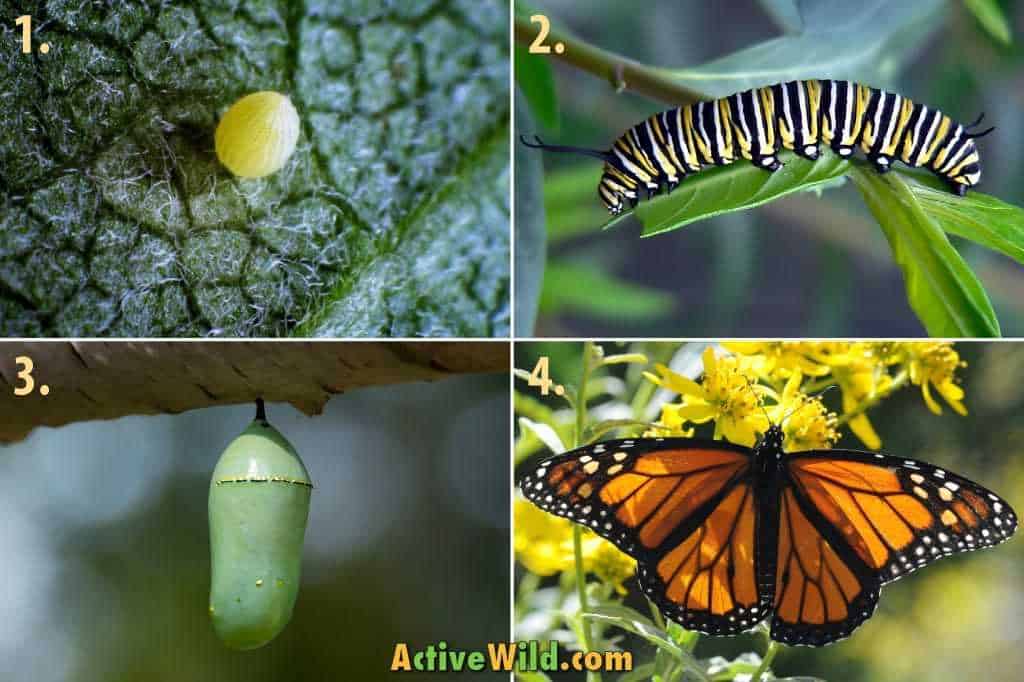
butterflies — are some of the most beautiful and amazing creations of nature. Their evolution has gone through many stages, and today they represent a true masterpiece of natural art.
Metamorphosis — a key moment in the butterfly's life cycle. It goes through several stages: egg, caterpillar, pupa, and finally, adult butterfly. Each of these stages has its own characteristics and amazing transformations.
Egg
The first stage of a butterfly's life is in the form of a small egg. The eggs often come in a variety of shapes and colors, which helps them camouflage and protect themselves from predators.
Caterpillar
When the egg hatches, a hungry caterpillar emerges. The caterpillar is the most active stage in the life of a butterfly. She constantly feeds and grows, periodically crawling through the larvae to replace her skin.
chrysalis
After several stages, the caterpillar larvae form a cocoon or pupa. Amazing transformations take place inside the pupa: a caterpillar turns into a butterfly. This process is called metamorphosis.
adult butterfly
Finally, the adult butterfly hatches from the pupa. She emerges into the light with wings that are initially soft and fold around her body. With each passing hour, the wings strengthen and unfold, acquiring bright and colorful patterns.
Thus, the metamorphosis of a butterfly is an amazing transformation that occurs throughout their entire life. Each stage of this process has its own unique beauty and value in the life of a butterfly.
Adaptations of butterflies to the environment
Butterflies are the result of a long evolution during which they have developed many adaptations that allow them to survive and thrive in a variety of environmental conditions.
One of the most important adaptations is the coloring of butterflies' wings. It can be varied and serves for camouflage, imitation of other dangerous species, and also for attracting partners during reproduction. Some species of butterflies have wings with bright and distinct patterns that help them ward off predators or warn of their poisonous nature.
Another important adaptation is the special structure of the mouthparts of butterflies. In most species it is presented in the form of a papilla, which serves to feed butterflies with nectar from flowers. However, some species of butterflies have mouthparts adapted for feeding on the juices of trees or fruits.
Butterflies also have special sensory organs that help them navigate their environment. For example, butterfly antennae play an important role in detecting food, finding mates, and warning of possible dangers. Some butterfly species also have hearing organs that help them detect the sounds of their predators or mates.
Another interesting butterfly adaptation is the ability of some species to change their shape and color to match their environment. This allows them to effectively camouflage and avoid danger.
Impact of human activity on butterfly populations
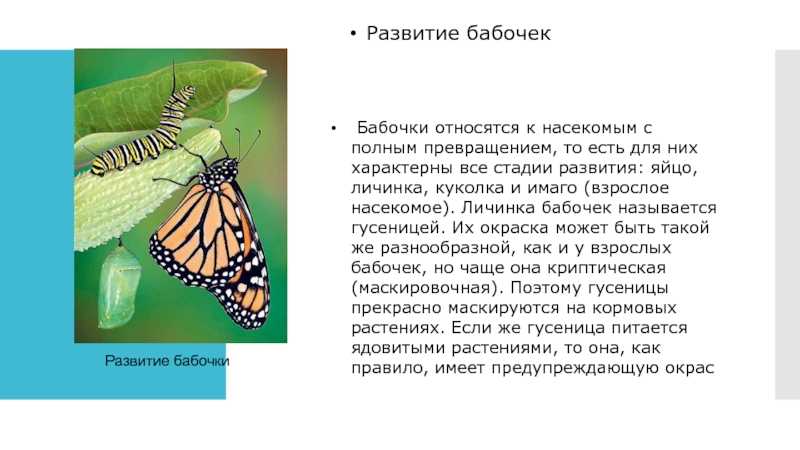
Butterflies are one of the most diverse classes of insects and play an important role in the ecosystem. They function as plant pollinators and also provide food for other animals. However, the impact of human activity on butterfly populations can be negative.
One of the main factors affecting butterfly populations is the loss and destruction of their natural habitat. Destruction of forests, cutting down trees and converting natural areas to agricultural land leads to the loss of habitat and feeding areas for butterflies. This can lead to population declines and even the extinction of some species.
Another factor affecting butterfly populations is the use of pesticides in agriculture. Pesticides used to protect plants from pests can harm not only harmful insects, but also beneficial organisms, including butterflies. They can poison butterflies or destroy their food sources, causing populations to decline.
Butterflies are also affected by climate change. Global warming and changing weather patterns may lead to changes in the breeding and migration seasons of butterflies. Some species may face a lack of food or changes in breeding conditions, which may cause their numbers to decline.
Therefore, to preserve butterfly populations and their diversity, it is necessary to take measures to preserve and restore their natural habitats, limit the use of pesticides and reduce greenhouse gas emissions. Only in this way can favorable conditions be provided for the evolution and preservation of the beauty and splendor of butterflies.

